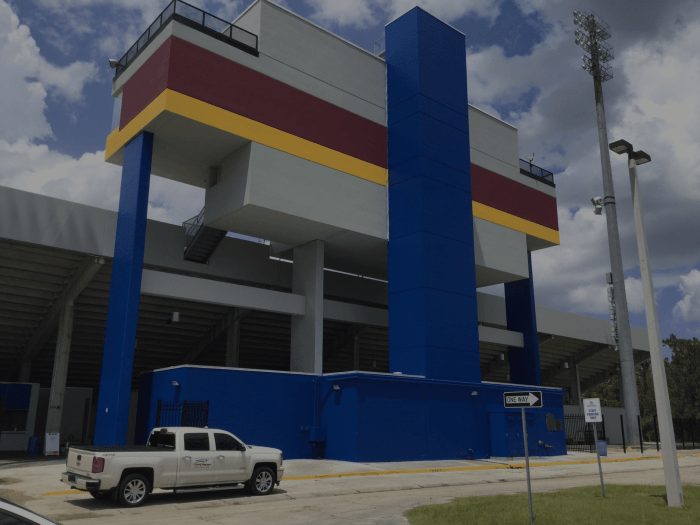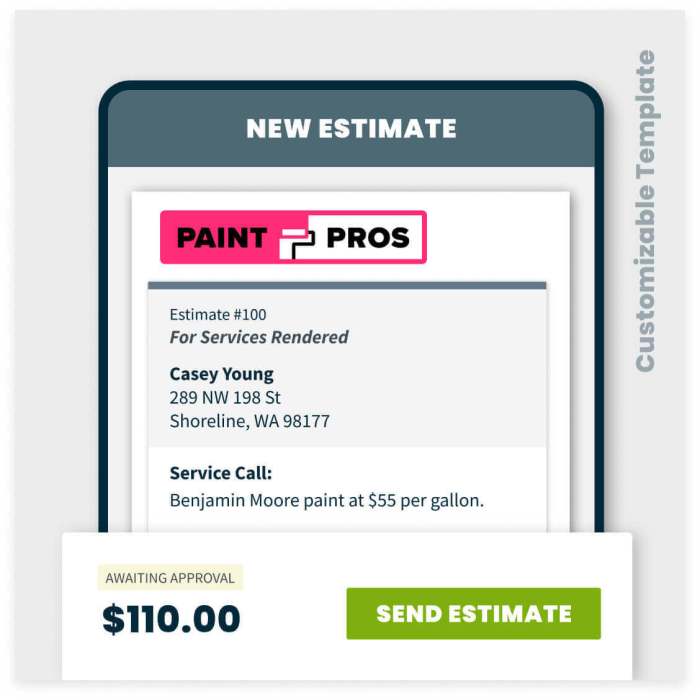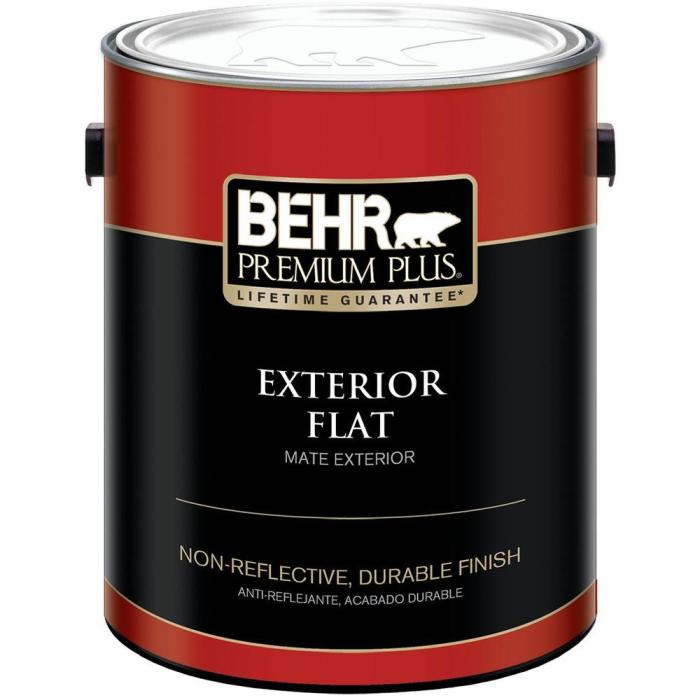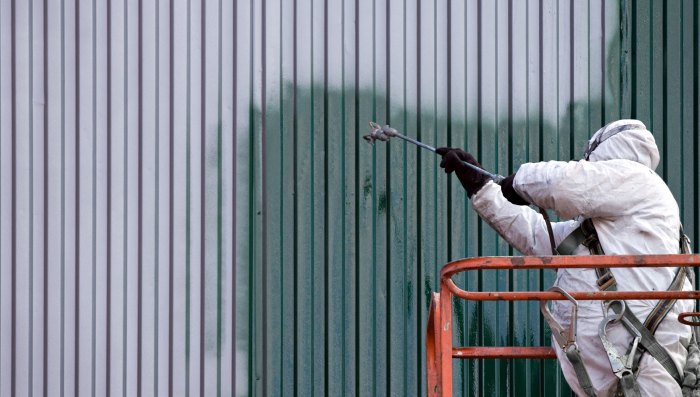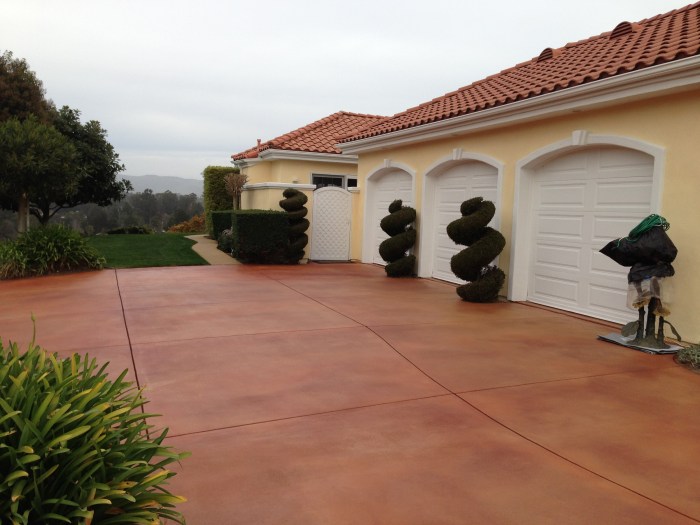Weather Resistant Exterior Paint Your Guide
Weather-resistant exterior paint is crucial for protecting your home’s exterior. Different paints react differently to the elements, from intense sun to harsh rain. This guide explores various paint types, application factors, and selection criteria to help you choose the ideal paint for your project.
We’ll delve into the diverse range of weather-resistant exterior paints, analyzing their formulations and performance against different weather conditions. Understanding these nuances is key to making an informed decision about the best paint for your home’s unique needs. Factors like surface preparation, environmental conditions, and application techniques will also be addressed, empowering you to select the optimal paint for your project.
Types of Weather-Resistant Exterior Paints
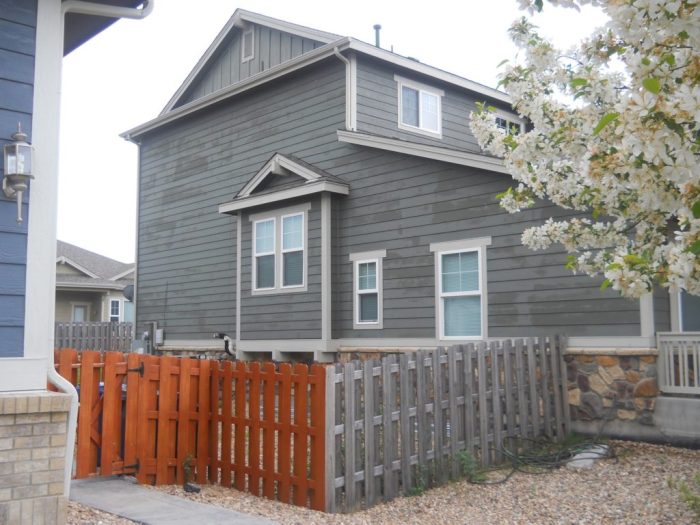
Source: paintingdenver.net
Exterior paints are crucial for protecting homes and buildings from the elements. Choosing the right type of paint is vital for longevity and maintaining a visually appealing aesthetic. Different formulations offer varying levels of protection against UV rays, rain, and temperature fluctuations, influencing the overall lifespan of the paint job.
Different Paint Formulations
Exterior paints come in various formulations, each with its unique properties. Understanding these formulations is key to selecting the most suitable paint for a specific application. The table below summarizes the key characteristics of common types.
| Paint Type | Formulation | Key Characteristics | Weather Resistance |
|---|---|---|---|
| Acrylic | Based on acrylic polymers, often combined with other binders | Generally versatile, good adhesion, relatively low cost, readily available, and suitable for most exterior surfaces. Easy to apply and can be tinted in various colors. | Excellent resistance to UV degradation, decent water resistance, moderate resistance to temperature fluctuations. Often formulated with additives for enhanced weather resistance. |
| Alkyd | Based on alkyd resins, often including drying oils like linseed oil | Offers good durability and chemical resistance. Provides a tough, hard finish, suitable for high-traffic areas. Traditional choice for many exterior applications. | Good resistance to UV degradation, relatively good water resistance, and decent resistance to temperature fluctuations. However, performance can vary depending on the specific alkyd formulation. |
| Silicone | Contains silicone polymers, offering enhanced flexibility | Highly durable and resistant to weathering. Excellent elasticity, allowing the paint to flex and contract with temperature changes without cracking. Often used for high-performance applications. | Exceptional resistance to UV degradation, excellent water resistance, and superior resistance to temperature fluctuations. Maintains a flexible, durable finish for extended periods. |
| Epoxy | Based on epoxy resins, often combined with other binders | Offers exceptional chemical resistance, good adhesion to various substrates, and a durable finish. Often used in industrial or high-moisture environments. | Excellent resistance to UV degradation, very good water resistance, and high resistance to temperature fluctuations. Suitable for demanding exterior conditions. |
| Polyurethane | Based on polyurethane resins | Provides a very durable and hard finish, often used in high-traffic areas or for commercial applications. Excellent resistance to scratches and abrasion. | Excellent resistance to UV degradation, very good water resistance, and high resistance to temperature fluctuations. Maintains a tough, hard finish, even after repeated exposure to the elements. |
Durability and Longevity Comparison
The durability and longevity of exterior paints depend on several factors, including the paint type, the environmental conditions, and the application method. Silicone paints, due to their inherent flexibility, tend to exhibit higher longevity and superior resistance to weathering compared to acrylic or alkyd paints. However, this comes at a higher cost. Proper surface preparation, application techniques, and regular maintenance significantly influence the lifespan of any paint system.
Factors Affecting Paint Performance
Exterior paint performance hinges on a multitude of factors beyond just the chosen paint type. Proper surface preparation, environmental conditions, and application techniques all play crucial roles in achieving a long-lasting and aesthetically pleasing finish. Understanding these factors is essential for achieving optimal results and preventing costly repairs down the road.
Careful consideration of these factors leads to a more durable and attractive paint job, minimizing the need for future touch-ups and ensuring the paint’s longevity. A well-prepared surface, for example, significantly enhances the paint’s adhesion, while the selection of an appropriate primer enhances the paint’s resistance to moisture and weather.
Importance of Surface Preparation
Adequate surface preparation is paramount for achieving a successful paint job. A properly prepared surface ensures the paint adheres firmly, preventing peeling, chipping, and premature failure. This involves removing loose or damaged paint, repairing cracks and holes, and ensuring the surface is clean and free of contaminants like dirt, grease, or mildew.
- Thorough cleaning of the surface is crucial. This typically involves the use of a suitable cleaner to remove any loose debris, dirt, or contaminants. This step helps ensure proper adhesion.
- Repairing any cracks or holes in the substrate is essential to prevent the paint from lifting or flaking at these points. Patching these areas with appropriate materials, such as spackle or patching compound, will strengthen the surface.
- Removing any existing loose or damaged paint is vital to ensure a solid base for the new paint. Use appropriate tools, like scrapers or wire brushes, to remove any old paint that is flaking or peeling.
Influence of Environmental Factors
Environmental conditions significantly affect the drying time and durability of exterior paint. Temperature and humidity play a critical role in the paint’s ability to cure and develop its full protective properties.
- Temperature: Ideal temperatures for painting typically range from 60°F to 80°F (15°C to 27°C). Lower temperatures can slow the drying process, increasing the risk of mold or mildew growth, while high temperatures can cause the paint to dry too quickly, resulting in an uneven or brittle finish.
- Humidity: High humidity can also impede the drying process, creating a humid environment that inhibits the paint’s curing. This can lead to problems such as mildew and fungal growth. Ideally, paint should be applied in conditions with low humidity.
Consequences of Improper Application
Using the wrong type of paint for a particular surface or employing poor application techniques can lead to various problems. Selecting the correct paint for the substrate is critical.
- Choosing the wrong paint: Using the wrong type of paint for a particular surface can result in premature failure. For instance, using a paint designed for wood on a metal surface might not adhere properly, leading to peeling and other issues. Matching the paint type to the surface is vital for optimal performance.
- Poor application techniques: Inadequate application methods can significantly impact the paint’s durability. Insufficient paint coverage or uneven application can result in areas that are more susceptible to damage from weather. Proper brushstrokes and adequate coverage are crucial for long-term protection.
Primer Selection and Application
Primer application is a critical step in achieving a durable paint finish, especially for exterior surfaces. Primers provide a barrier between the substrate and the topcoat, enhancing adhesion and resistance to moisture and weather. The right primer type is critical.
- Types of Primers: Different primers are designed for various substrates and conditions. For example, metal primers are formulated to prevent rust, while concrete primers offer enhanced adhesion on concrete surfaces. Understanding the surface’s characteristics is crucial for choosing the correct primer.
- Importance of Priming: Using a primer before painting creates a better base for the paint to adhere to. It helps to seal the surface, ensuring a more durable and lasting finish. This is particularly important on porous surfaces like wood or concrete, where the primer helps to fill pores and prevent moisture absorption.
Climate and Weather Considerations
Selecting the right paint for specific climates and weather conditions is crucial for long-term protection. Different climates have varying levels of moisture, temperature extremes, and UV exposure. These factors need to be taken into account when selecting paint.
- Selecting Paints for Specific Climates: For example, regions with high humidity might benefit from paints formulated with mildew inhibitors, while areas with extreme temperature fluctuations may need paints with greater flexibility and elasticity.
Choosing the Right Paint for Your Project: Weather-Resistant Exterior Paint
Selecting the appropriate weather-resistant exterior paint is crucial for protecting your home’s investment and ensuring its longevity. Understanding the nuances of different paint types, considering local climate conditions, and factoring in your budget are essential steps in this process. Careful consideration will lead to a more durable and aesthetically pleasing finish.
Decision-Making Guide for Paint Selection
This guide articulates the key factors to consider when choosing exterior paint, helping you make an informed decision. Budget constraints, desired aesthetics, and local climate conditions should all be factored into the decision-making process. A thorough evaluation of these elements will ensure a paint choice that aligns with your needs and maximizes longevity.
Factors Affecting Paint Performance
Several factors impact the performance of weather-resistant exterior paints, including the specific type of paint, the local climate, and the preparation of the surface. Understanding these influences is vital to selecting the most suitable product for your project. The longevity and effectiveness of a paint job are directly related to these considerations.
Steps in Choosing the Ideal Paint
A systematic approach is beneficial when selecting exterior paint. Begin by evaluating your budget and the desired aesthetic. Next, consider the local climate and the specific environmental conditions your home will face. Then, research different paint types and compare their warranties. Finally, consider the cost-effectiveness of each option over time. This thorough process ensures the chosen paint is appropriate for your needs.
- Budget Assessment: Determine the financial resources available for the project. Different paint types have varying price points. Consider the cost per square foot to estimate the total project expense.
- Desired Finish: Evaluate the desired aesthetic, considering factors like gloss level (e.g., satin, semi-gloss, gloss). Different finishes offer varying degrees of reflectivity and light dispersion.
- Local Climate Conditions: Assess the prevailing weather conditions in your area, including temperature fluctuations, humidity levels, and potential exposure to harsh weather elements. This information informs the selection of appropriate paint formulations.
- Surface Preparation: A crucial step to ensure optimal paint adhesion. This step involves thoroughly cleaning and repairing any damaged areas of the surface.
- Paint Type Research: Explore various paint types (e.g., acrylic, alkyd) and their suitability for your project. Research different brands and their specific performance characteristics.
Questions to Ask When Evaluating Paint Options
Thorough research and questioning of paint options are necessary to make an informed decision. Seek answers to these questions to ensure you choose the right paint for your project.
- Warranty and Guarantee: Inquire about the warranty and guarantee offered by the paint manufacturer. This will indicate the manufacturer’s confidence in the product’s performance.
- Cost-Effectiveness Analysis: Compare the initial cost of different paint types with their long-term performance and durability. Consider factors like repainting frequency and the potential need for repairs.
- Paint Finish Suitability: Determine the suitability of different finishes (e.g., satin, semi-gloss, gloss) for various applications. Consider the aesthetic requirements and the functional aspects of each finish.
Understanding Paint Warranties and Guarantees
Paint warranties and guarantees provide valuable insights into a product’s expected lifespan and performance. A comprehensive warranty often indicates a higher quality paint and more reliable performance. Understand the specific terms of the warranty to avoid any misunderstandings.
Cost-Effectiveness Comparison, Weather-resistant exterior paint
Comparing the cost-effectiveness of different paints over time requires a thorough analysis of initial cost versus long-term performance. Consider factors such as repainting frequency and potential repair costs. For example, a higher initial cost for a premium paint might be offset by its extended lifespan and reduced need for future repairs.
Examples of Different Paint Finishes
Different paint finishes offer varying aesthetic qualities and functional properties.
| Finish | Description | Suitability |
|---|---|---|
| Satin | Offers a subtle sheen, good for hiding imperfections, and easier to clean. | Excellent for most exterior applications, especially in areas with moderate traffic. |
| Semi-Gloss | Provides a moderate sheen, more durable than satin, and excellent for high-traffic areas. | Ideal for areas prone to moisture or dirt, like doors and trim. |
| Gloss | Provides a high level of reflectivity, excellent for high-traffic areas, and easy to clean. | Suitable for areas exposed to frequent cleaning or harsh weather conditions. |
Last Point
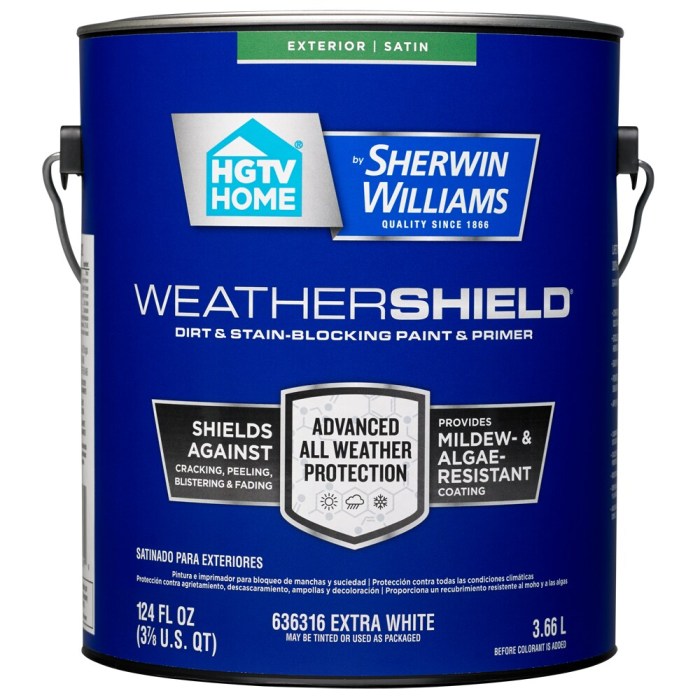
Source: lowes.com
In conclusion, selecting the right weather-resistant exterior paint involves careful consideration of paint types, application methods, and environmental factors. By understanding the diverse options available and the critical factors influencing performance, you can confidently choose a paint that not only enhances your home’s aesthetics but also safeguards it against the elements. Remember to prioritize proper surface preparation, choose the right paint for your climate, and follow application guidelines for optimal results and long-lasting protection.
